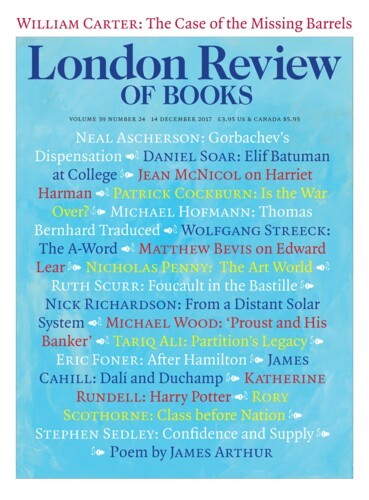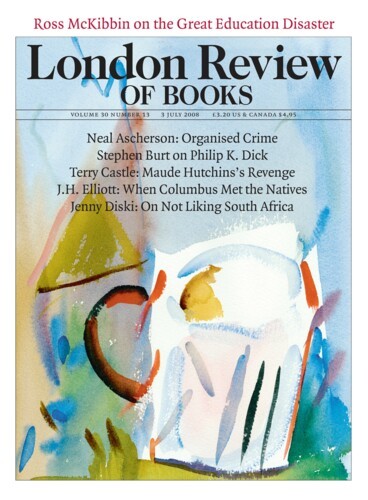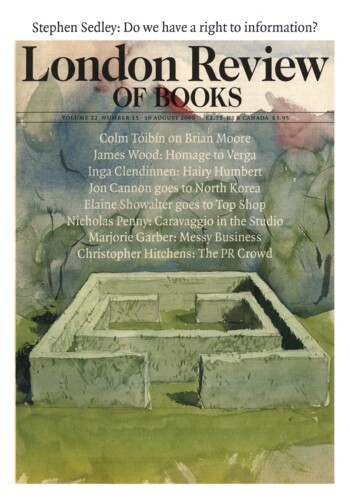Antonia Byatt’s new novel opens with a lecture and a window. Phineas G. Nanson, listening to an exposition of Lacan’s theory of morcellement, looks up at the window and decides to quit academe. He thinks: ‘I must have things. I know a dirty window is an ancient, well-worn trope for intellectual dissatisfaction and scholarly blindness. The thing is, that the thing was also there. A real, very dirty window, shutting out the sun. A thing.’ An earlier Byatt novel, Still Life, invoked the well-worn line from William Carlos Williams’s Paterson: ‘Say it, no ideas but in things.’ Still Life is the second in a trilogy of predominantly realist novels about the extended Potter family. It details the cerebral and romantic struggles of the clever middle-class sisters Frederica and Stephanie, educated at Cambridge in the 1950s. In contrast, The Biographer’s Tale is a lush celebration of allusive and imaginative metaphor: rich pickings from at least four centuries of Western civilisation are piled up in a teetering fictional edifice. The novel is like one of those new-old children’s toys through which you can post marbles and watch them ricochet down steps, seemingly out of control. Byatt herself describes it as ‘a patchwork, echoing book’, but the echoes you hear, the walls you hit and the angles you hit them at, have all been decided in advance. This is the point. And the point is underlined, several times.‘
Antonia Byatt’s new novel opens with a lecture and a window. Phineas G. Nanson, listening to an exposition of Lacan’s theory of morcellement, looks up at the window and decides to...



